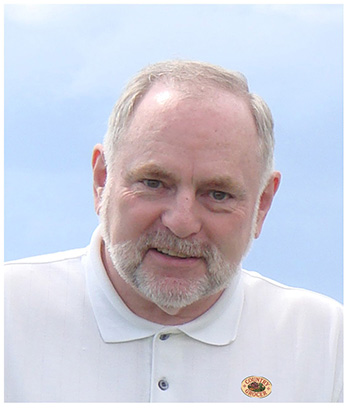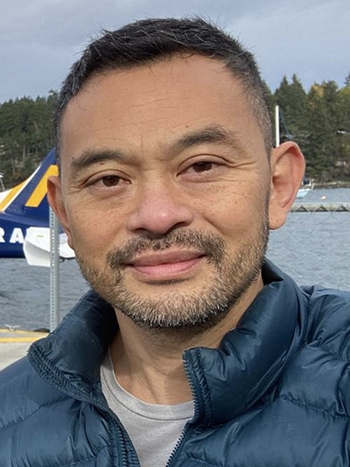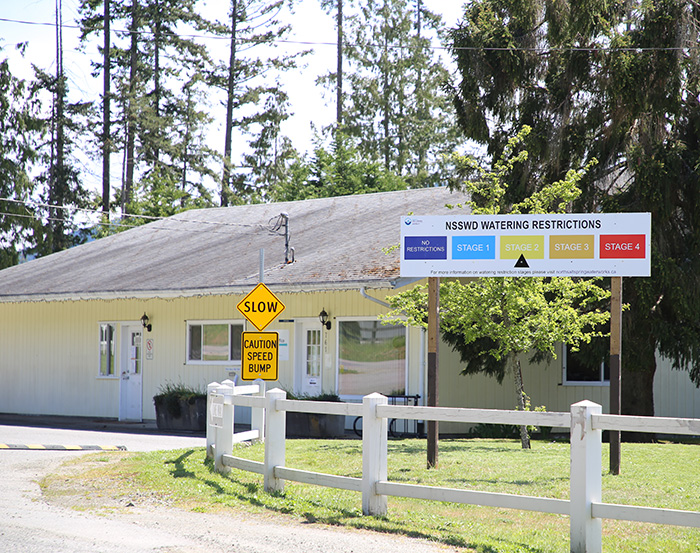Four candidates are in the running for two North Salt Spring Waterworks District (NSSWD) board of trustee seats. Qualified voters should have received ballots in the mail by now, but people can also vote in person at Community Gospel Chapel (CGC) on Thursday, April 27 from 2 to 6 p.m. The NSSWD annual general meeting will begin at 6 p.m. at CGC that day, with an online AGM link via Microsoft Teams also available. For details about voter eligibility and other details — only landowners within the NSSWD can vote, for example — contact the NSSWD, or see advertisements in the Gulf Islands Driftwood newspapers of March 29, April 5 and 12.
The four candidates are Gary Gagné, Leigh Large, Steve Lam and Elizabeth FitzZaland. Their answers to the three following questions posed by the Driftwood (who mandated a maximum word limit) are printed below and also in the April 12 issue of the Driftwood newspaper.
1. What motivated you to run for a NSSWD trustee position, and what do you bring to the table?
2. What steps, if any, do you think the NSSWD should take to increase the amount of available water in its system?
3. Do you support the NSSWD remaining independent of the CRD? Why or why not?
GARY GAGNÉ

1. As a current trustee and vice-chair of the board, I am committed to the continued improvements in our relationship with the ratepayers. I am keenly aware of the burden of higher taxes and will continue doing all I can to find access to grants in order to help pay for the new treatment plant and the replacement of our aging pipes. I endorse Elizabeth FitzZaland as a new trustee to the board.
2. The first step is to have the new treatment plant on Maxwell Lake built. We will then have the ability to transfer water between the two systems, which may result in a more efficient use of the water we do currently have available. Another increase will arise as the restoration of the Maxwell watershed benefits the water table resulting in increased underground and sediment-free flows into that lake even during the dry summer months. Education around water conservation is already having a positive effect on the amount of available water as well as the new toll rate structure.
3. All decisions about water must be made on the island by islanders. We already have too many examples of botched take-overs by the CRD that are costing those districts enormous sums of money to correct. NSSWD currently has the cheapest overall rates of any district on the island. We are being very proactive in helping the province see the wisdom of supporting this improvement district.
LEIGH LARGE


1. Our water system is a $50-million asset. I’d like to see supplemental business acumen and financial understanding around the table to ensure we are doing the best we can to look after our water system. I like dealing with issues openly and honestly. This approach has always served me well. We have a huge structural problem in the system – leakage of an estimated 25 per cent of our clean water is lost every day. That must be fixed with no additional costs to ratepayers.
We also have a potentially catastrophic lawsuit lingering in the background pertaining to water supply commitments made to Channel Ridge. This paralyzes our ability to plan. I’m confident we can find a way to put this behind us.
2. In addition to fixing the very serious leak problem, we have many water-saving tools available to us. They just haven’t yet been implemented on a wide enough scale. Rainwater capture, low flow toilets, grey water plumbing in our houses — these are all powerful water-saving strategies. A program to switch out toilets to low flow could easily be funded by the private sector.
If we start saving water we can then re-allocate some of this precious resource within the existing infrastructure with no extra costs. This would lead to more workforce housing and provide a brighter future for our children who otherwise may not be able to stay on Salt Spring.
3. This is a very complex question that requires further dialogue so we can arrive at a Salt Spring-centric solution. There are many issues entwined with the idea of NSSWD becoming part of CRD, both pro and con. We need to sort out pending litigation, many years of deferred maintenance and our inability to currently access funding for our aging water system. I expect that creating stronger ties to all levels of government will allow us to find more innovative solutions to the management of our water system.
STEVE LAM


1. When I saw the ad in the Driftwood asking for nominations, my immediate reaction was that I can bring a fresh perspective to the critical issues around water for our community and really make a difference.
I bring to the table years of professional experience in the water industry. Having been involved in building over a dozen water treatment plants around the world, I know how water systems are designed, built, maintained and operated. My customers deal with similar issues facing NSSWD, including water shortages, increasing demand, aging infrastructure and budgetary constraints.
2. Looking at available data, we typically withdraw about 30 per cent of the reservoir water that we are licensed for from Maxwell and St. Mary lakes. If we want to increase the available water we would need to assess the risk of withdrawing more water from our reservoirs, or work together to consume less. Small changes make a difference. It may not seem like a lot but a one per cent increase in what we withdraw could provide water for about 20 new parcels or 60 people.
3. First, I believe that NSSWD is well managed and provides some of the best water on the island. NSSWD is owned by the ratepayers, and all ratepayers have a say. However, if we look at past election results, voter turnout is low. As such, perhaps the ratepayers would prefer our water to be managed differently. The CRD’s mandate is to provide essential services and water is an essential service. There are significant benefits that can be realized if water was managed under the CRD, including economies of scale, and the ability to receive funding from the federal and provincial governments. Ratepayers in CRD districts pay significantly less for water compared to Salt Spring Islanders. As such, if the opportunity arose for the CRD to take over the management of NSSWD, I would support it because I believe it would ultimately lead to lower water costs.
ELIZABETH FITZZALAND


1. I want to ensure islanders always have safe and affordable water. There are challenges threatening this essential service, including deteriorating infrastructure, escalating costs, climate risks, and the moratorium and pending litigation. I believe NSSWD is at a critical moment. The decisions the board makes in the next few years will either significantly benefit or harm ratepayers and the broader community. I am ready to contribute my experience in project management and community development to help find fiscally and environmentally sound solutions based in science and supported by ratepayers.
2. a) Fix the leaks. NSSWD must fix the significant leaks in the system. Data shows that an estimated 25 per cent of treated water never reaches taps. That’s 25 per cent more capacity right there.
b) Increase conservation. NSSWD residential users consume up to five times the daily average of some of the other local systems. NSSWD needs to provide more education and financial incentives to encourage conservation and uptake of alternatives like rainwater catchment.
c) Revise rate structure and policies. Treated potable water should be prioritized for human consumption, not filling pools or watering rhododendrons. Paired with the steps above, NSSWD should revise policies to rein in excessive use and support water-efficient development.
d) Best practices and advocacy. We need to use science and reasonableness to ensure the metrics and rules we use for water planning are sound. NSSWD must make or advocate for needed change. Let’s replace bad math with good math to support problem-solving.
3. Senior governments fund up to 70 per cent of infrastructure upgrades in B.C. Only municipalities and regional districts are eligible for this vital funding. While I understand there is a history of dissatisfaction with the CRD, NSSWD simply cannot remain viable without this funding when it has identified at least $24 million of necessary upgrades. Let’s elevate the conversation from “independent or CRD” to how a constructive partnership that protects ratepayer interests can be crafted. Ratepayers deserve to be part of the discussion, review pros and cons, and weigh in on the best path forward.

